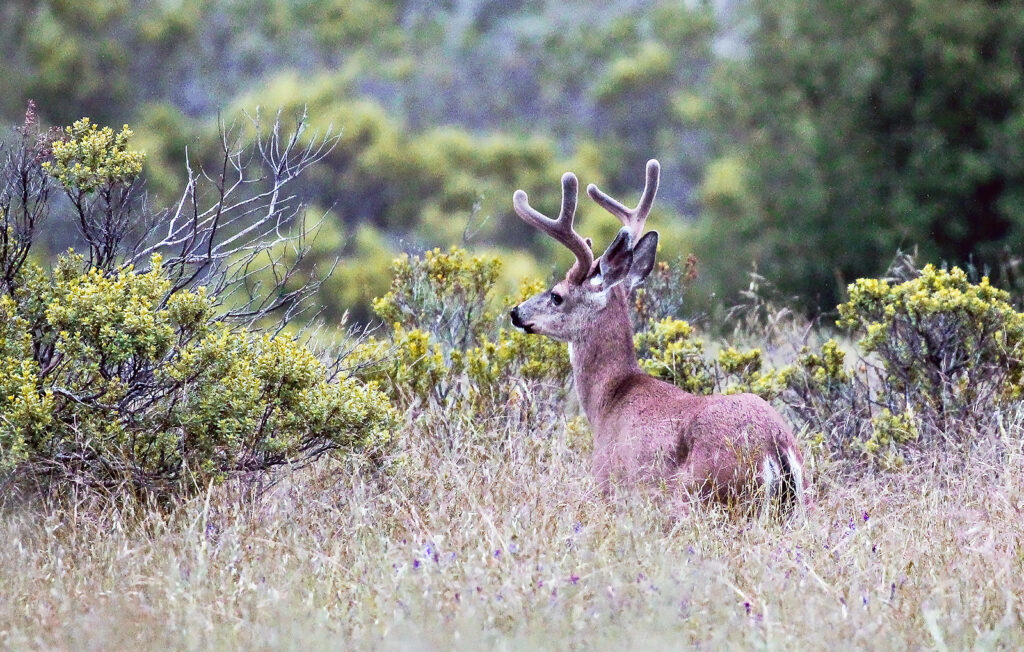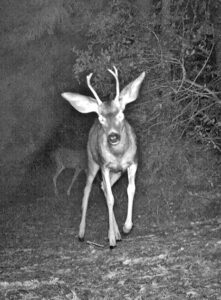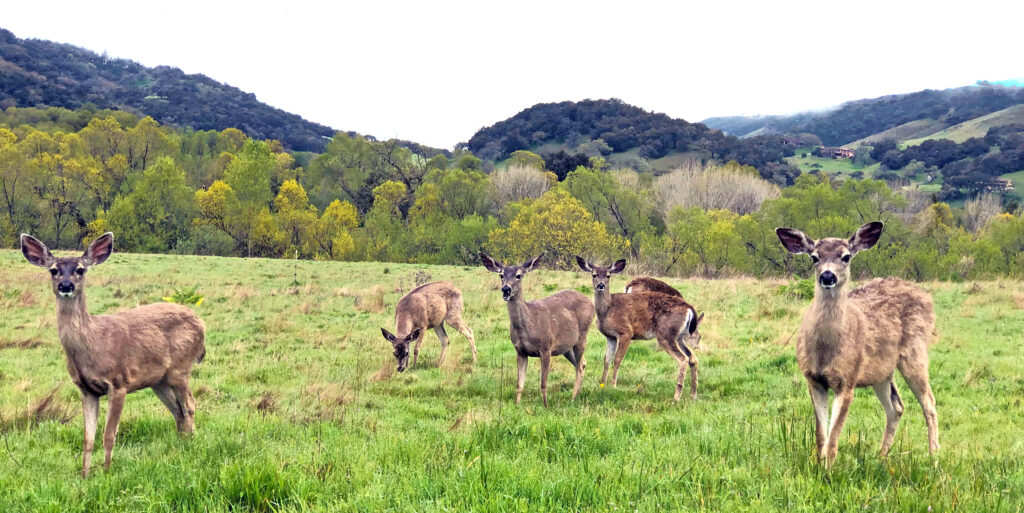
Mule Deer rutting season
October 24, 2023
by Emma Levy, Conservation Ecologist
Mule deer find a very welcoming environment on the Santa Lucia Preserve. Discriminating foragers, they seek the most nutritious parts of a variety of plants (including berries and acorns), rather than large quantities of low-quality grasses and leaves. The Preserve’s large variety of vegetation in different habitat areas, combined with its limited human development, makes dining convenient year-round. Likewise, the mild climate of California’s Central Coast offers little reason to migrate during winter months, so mule deer on The Preserve are likely to reside year-round.
Also known as black-tailed deer, mule deer (Odocoileus hemionus californicus) derive their name from their large, mule-like ears, but they are also distinguished by the branching pattern of their antlers and the black tips of their tails.
Fawns are usually born in warm spring and summer months, with brown coats and white spots that disappear as they mature. They are weaned within two to three months but remain with their mothers for a full year. All mule deer have tan or brown summer coats that turn to darker brown and gray in winter. They are sexually mature by the second winter and usually live for nine to 11 years. Bucks reach a weight of 120 to 330 pounds, while does range from 95 to 220 pounds.

It’s common to observe deer in the fall, especially at dawn and dusk. This period usually lasts from mid-October through November, as the adult males are in “rut.” During this season, bucks are sparring with one another and pursuing mating opportunities with does. Bucks will also be rubbing their antlers on trees to remove the velvet and scraping the ground to mark their paths. A single dominant male will mate with multiple females in a single season. We have already started to see bucks escorting herds of does in The Preserve.
Once a doe mates, her gestation lasts about 200 days. A mature doe often gives birth to two fawns annually. Bucks will drop their antlers in January or February. When spring rolls around, the buck’s antlers will start to regrow.
Why should we be more aware of deer this time of year?
With Bucks chasing after does during this season, the animals will not be watching for vehicles when crossing roads. In fact, the deer rut season doubles the likelihood of car collisions with wildlife in California. When driving, look ahead and scan the sides of roads to prevent potential impacts with deer. It’s best to maintain a safe speed and use high beams if possible. Remember that if you see one deer, it’s likely there are more behind it.
